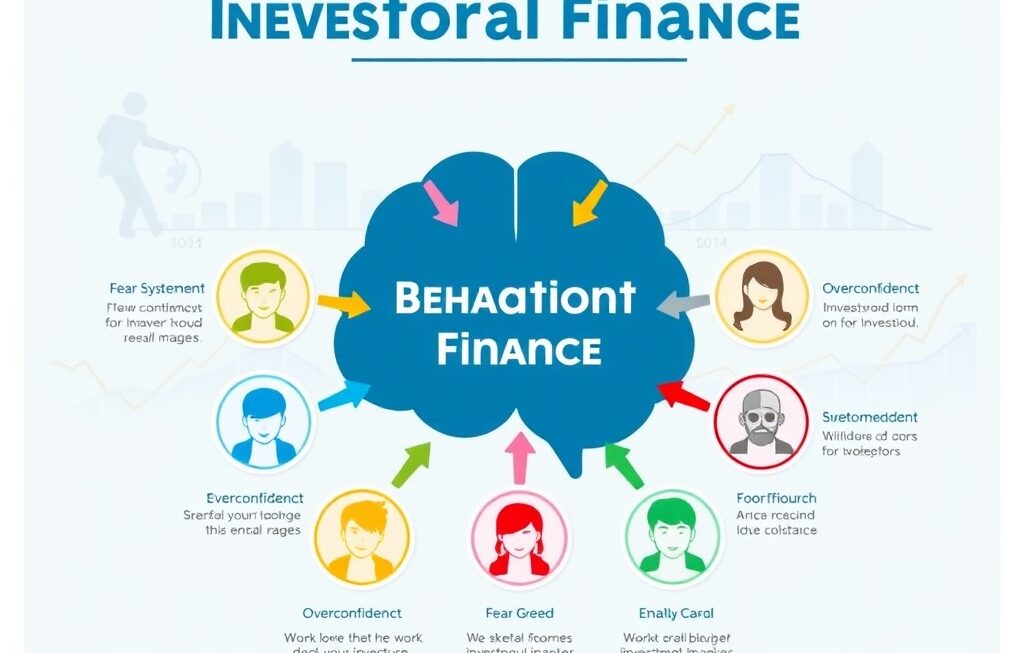In the ever-evolving landscape of investing, few principles remain as timeless and essential as diversification. Whether you’re a new investor or a seasoned financial professional, understanding the role of diversification in portfolio management is crucial for achieving consistent and sustainable returns.
Diversification is not merely about holding multiple assets; it’s a sophisticated strategy designed to balance risk and reward. By spreading investments across different asset classes, sectors, and regions, investors can minimize exposure to market volatility and protect their portfolios from unpredictable downturns.
In today’s globalized and data-driven financial world, diversification has evolved from a simple concept into an advanced portfolio management tool — blending traditional approaches with modern analytics, technology, and behavioral insights.
What Is Diversification and Why It Matters
At its core, diversification is the practice of investing in a variety of assets to reduce overall portfolio risk. The idea is simple: not all investments move in the same direction at the same time. When one asset underperforms, others may offset those losses, keeping the portfolio balanced.
This approach relies on correlation, a statistical measure of how different investments move relative to one another. Assets with low or negative correlations are ideal for diversification because they tend to perform differently under varying market conditions.
For example:
- Stocks may rise during periods of economic growth.
- Bonds often perform well when markets are uncertain.
- Real estate and commodities can provide inflation protection.
By combining these assets strategically, investors can create portfolios that generate more stable returns across economic cycles.
Historical Context: The Evolution of Diversification
The principle of diversification dates back to the 1950s with Harry Markowitz’s Modern Portfolio Theory (MPT), which demonstrated mathematically how diversifying investments could maximize returns for a given level of risk.
Since then, diversification has remained the foundation of portfolio management — but its methods have evolved dramatically. Today, investors can diversify not only across asset classes but also through:
- Geographic diversification, spreading investments across global markets.
- Sector diversification, balancing exposure among industries such as technology, healthcare, and energy.
- Style diversification, combining growth and value stocks for balanced performance.
Modern tools such as AI-driven analytics, robo-advisors, and exchange-traded funds (ETFs) have further enhanced investors’ ability to construct well-diversified portfolios with precision and accessibility.
Key Benefits of Diversification
1. Reduced Volatility
A diversified portfolio helps smooth out returns by ensuring that poor performance in one asset is offset by stronger results in others. This reduces the overall volatility of your investments, making it easier to stay invested during market downturns.
2. Protection Against Uncertainty
No one can predict the future of markets with complete accuracy. Diversification acts as a safety net, protecting your portfolio from unforeseen events such as economic recessions, political instability, or global crises.
3. Improved Risk-Adjusted Returns
Diversification doesn’t just reduce risk; it can also enhance performance relative to that risk. A well-balanced portfolio often achieves better risk-adjusted returns than one heavily concentrated in a single asset type.
4. Long-Term Growth Stability
By investing across asset classes with different cycles, investors can create steady long-term growth without extreme ups and downs — a crucial factor for building wealth over decades.
Types of Diversification in Modern Portfolios
Modern investors can apply diversification in multiple ways depending on their goals, risk tolerance, and investment horizon.
Asset Class Diversification
This is the most common form — spreading investments across stocks, bonds, real estate, commodities, and cash equivalents.
Geographic Diversification
Investing globally helps reduce exposure to country-specific risks. For example, holding U.S., European, and Asian equities spreads geopolitical and currency risk.
Sector Diversification
Investing in different sectors prevents overexposure to industry-specific downturns. For instance, when tech stocks drop, healthcare or consumer staples may rise.
Time Diversification
Also known as dollar-cost averaging, this involves investing consistently over time to reduce the impact of short-term volatility.
Strategy Diversification
Combining different investment strategies — such as growth, value, dividend, and index investing — can help balance performance across market environments.
The Role of Diversification in Risk Management
Risk management is at the heart of portfolio management, and diversification is its most powerful tool. By distributing risk across uncorrelated assets, investors can avoid the catastrophic impact of a single investment failure.
For example, a portfolio heavily invested in one company or industry could experience major losses during a sector downturn. However, a diversified portfolio — with exposure to bonds, international equities, and alternative assets — remains more resilient.
Moreover, diversification helps manage systematic and unsystematic risk:
- Systematic risk (market risk) affects all investments to some extent.
- Unsystematic risk (company or sector-specific risk) can be largely mitigated through diversification.
Diversification and Modern Technology
Today’s investors have unprecedented access to technology that makes diversification easier and more precise. AI-driven portfolio analysis, real-time data tracking, and advanced risk modeling tools help create tailored investment strategies that align with each investor’s objectives.
Robo-advisors like Betterment, Wealthfront, and Schwab Intelligent Portfolios use algorithms to automatically diversify client portfolios based on factors such as age, risk tolerance, and time horizon.
Meanwhile, ETFs have revolutionized accessibility to diversified investments by offering exposure to entire markets or sectors with a single purchase.
Common Misconceptions About Diversification
Even though diversification is widely discussed, many investors still misunderstand its application:
- Myth 1: More assets mean better diversification.
Not necessarily. Holding too many correlated assets (like multiple U.S. tech stocks) doesn’t reduce risk. True diversification requires combining assets that behave differently. - Myth 2: Diversification eliminates risk.
Diversification minimizes risk, but it cannot eliminate it entirely. All investments carry some level of market exposure. - Myth 3: Diversification reduces returns.
While it may limit extreme gains, diversification generally increases consistency — a key factor for long-term success.
How to Build a Diversified Portfolio in 2025
Building a diversified portfolio in the modern investment environment involves several key steps:
- Assess Your Risk Tolerance
Understand how much volatility you can handle. Conservative investors may prefer bonds and dividend stocks, while aggressive investors may focus on equities or emerging markets. - Define Your Time Horizon
Long-term investors can afford to take on more risk, while short-term investors should prioritize stability. - Choose a Mix of Asset Classes
Include a balance of equities, bonds, and alternative assets like real estate or commodities. - Diversify Within Each Category
For example, in equities, consider exposure across large-cap, mid-cap, and small-cap companies, as well as different sectors and regions. - Rebalance Regularly
Market movements can alter your asset allocation over time. Rebalancing ensures your portfolio stays aligned with your original goals. - Use Technology and Data Tools
Utilize AI-powered platforms and robo-advisors to automate diversification and gain access to advanced analytics.
The Future of Diversification
As financial markets become more complex, diversification will continue to evolve. Emerging trends like AI-driven investing, ESG integration, and tokenized assets will redefine how investors build and balance portfolios.
In the future, diversification will go beyond traditional financial assets — incorporating digital currencies, carbon credits, and even fractional ownership of physical assets like real estate or art.
Ultimately, diversification will remain the foundation of sound investing, but its tools and applications will grow more sophisticated and personalized.

In Summary: Diversification in Modern Portfolio Management
Diversification is not just a defensive strategy; it’s a proactive and intelligent approach to portfolio management. By understanding how assets interact and balancing exposure across markets, investors can protect themselves from volatility while positioning for long-term success.
In the modern era of investing — driven by technology, globalization, and rapid innovation — mastering diversification in portfolio management is the key to building a resilient and prosperous financial future.




